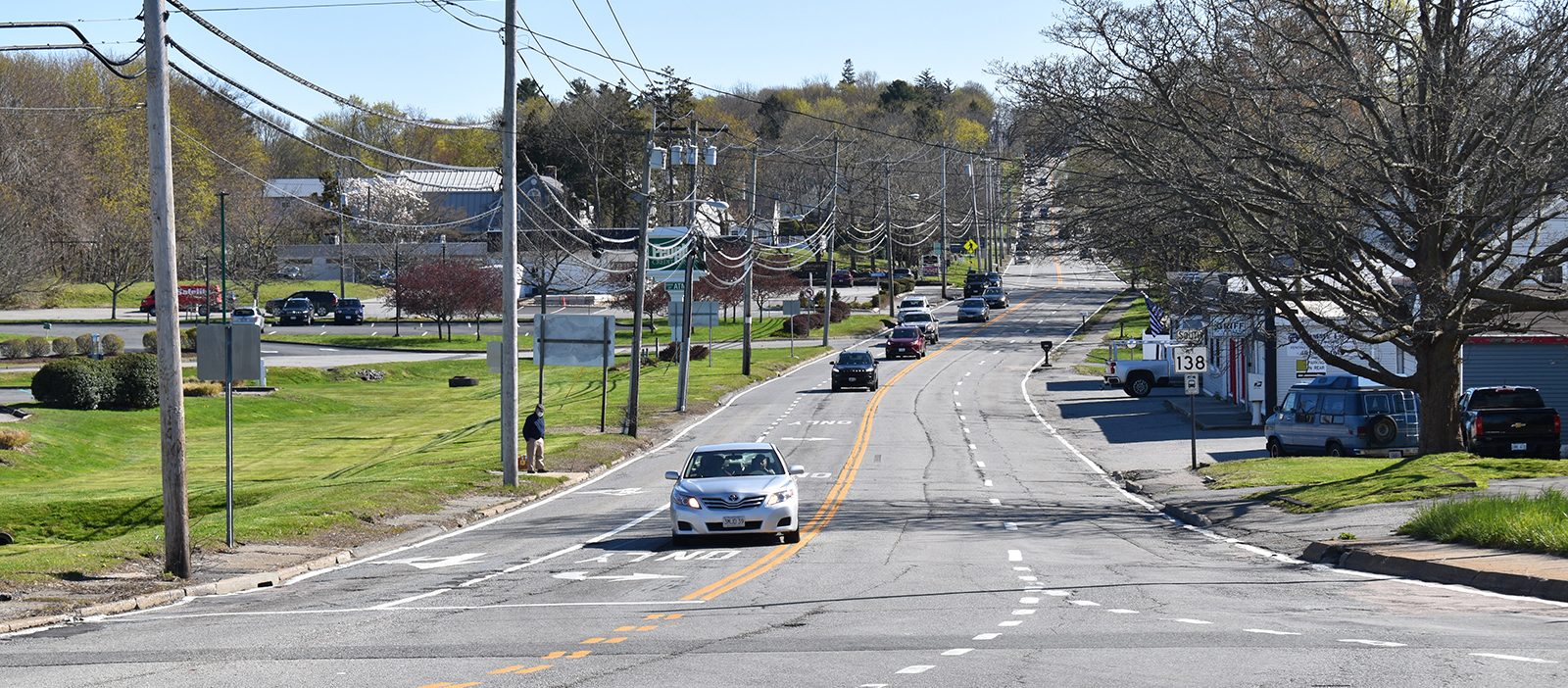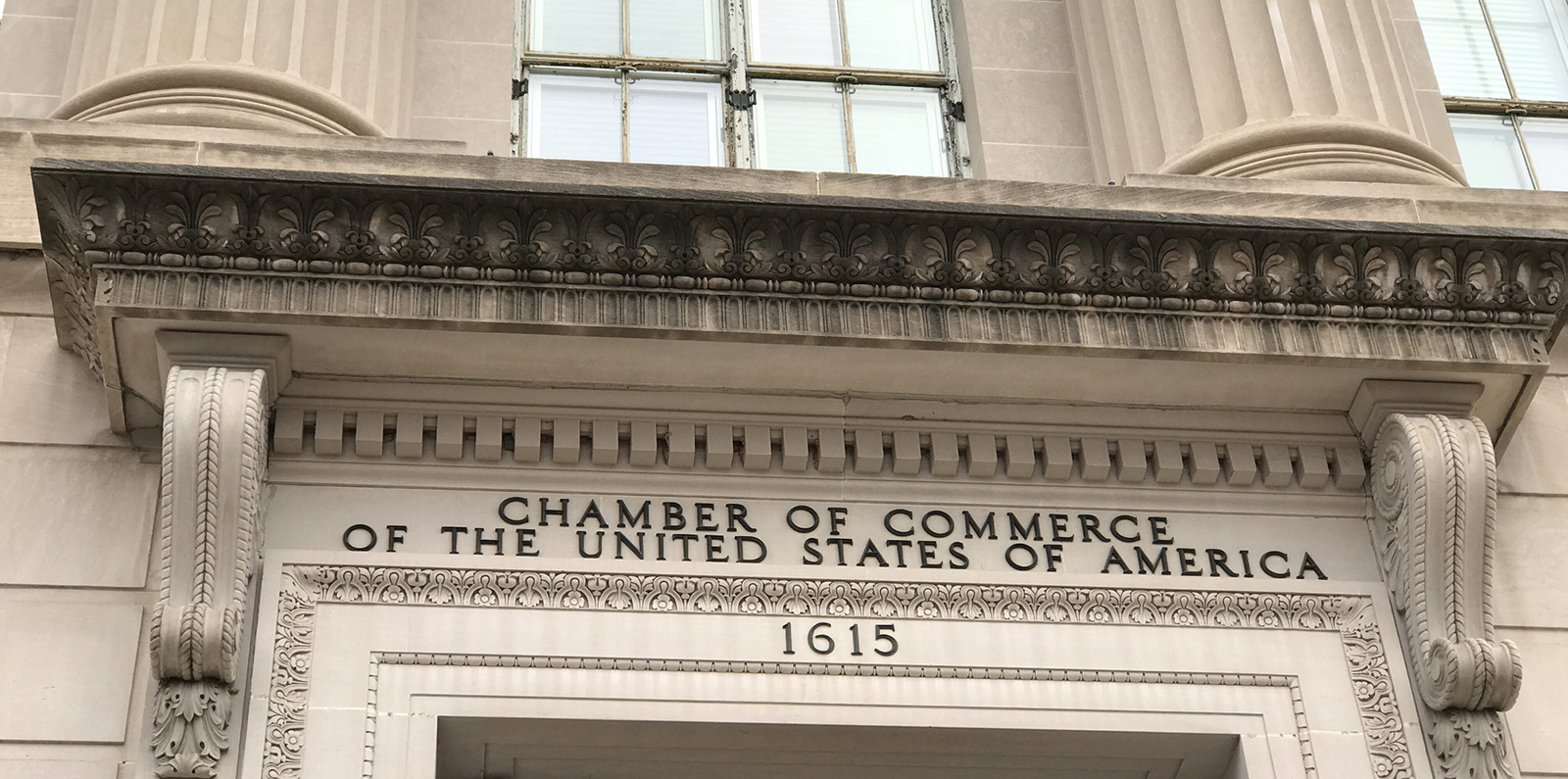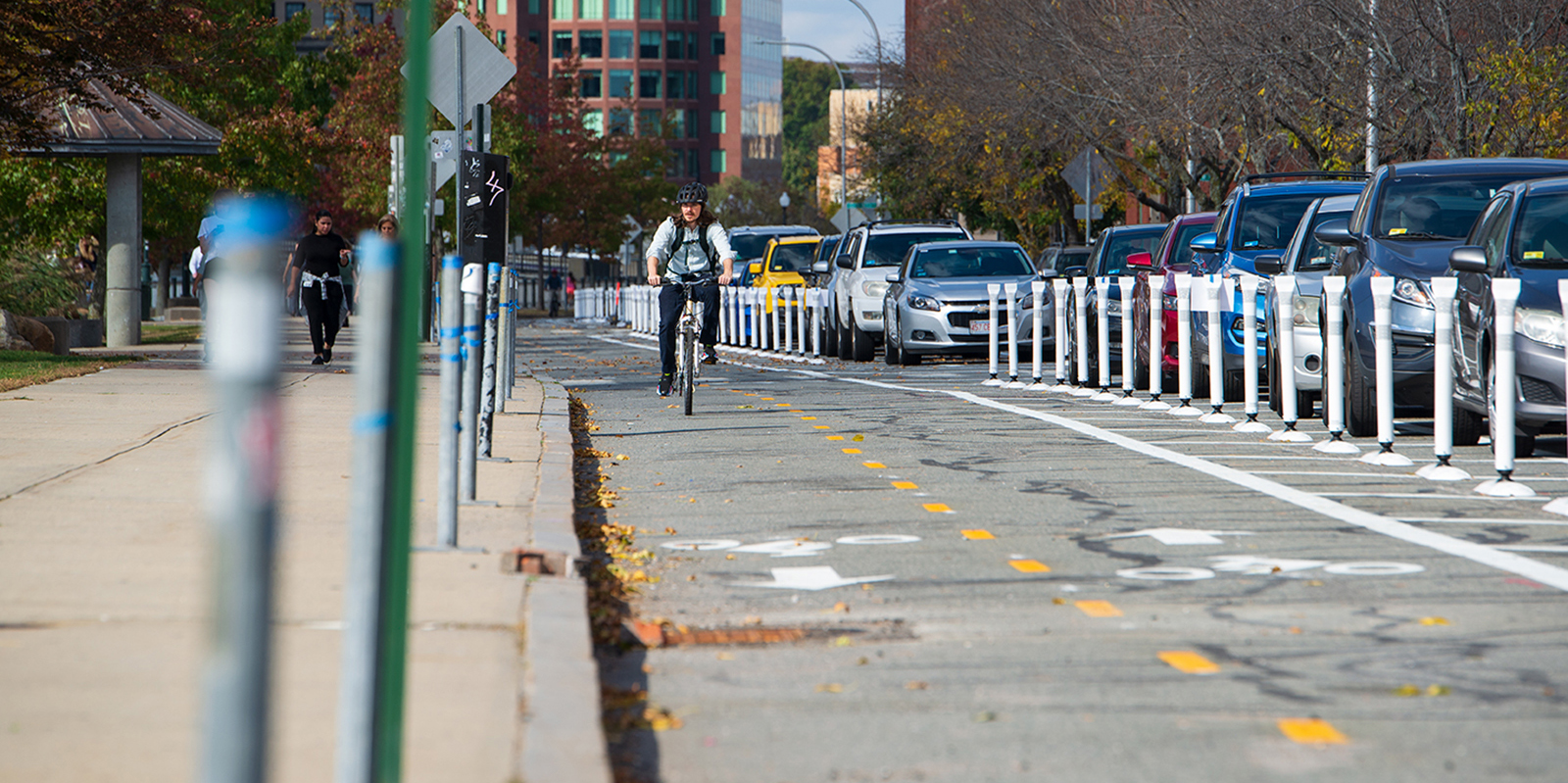Striking Rhode Island Development Trend: Make It Easier to Build Everywhere
June 29, 2023
Halfway down page 10 in Senate bill 1037A headed to or already on the governor’s desk are two lines crossed out in red that sum up Rhode Island development. The struck sentence reads: “There will be no significant negative environmental impacts from the proposed development as shown on the final plan, with all required conditions for approval.”
The next paragraph notes the importance of protecting those living in and around the proposed development. “There will be no significant negative impacts on the health and safety of current or future residents of the community, in areas including, but not limited to, safe circulation of pedestrian and vehicular traffic, provision of emergency services, sewerage disposal, availability of potable water, adequate surface water run-off, and the preservation of natural, historical, or cultural features that contribute to the attractiveness of the community.”
By erasing the part about protecting the environment in a significant manner, the General Assembly misses a key point about public health and neighborhood well-being: If we don’t protect the environment, we can’t protect ourselves.
Indigenous people have long been telling us that the continued trashing of the natural world for profit would lead to environmental degradation and ecosystem collapse.
Rhode Island has ignored their wisdom. Instead, open space is largely viewed in the context of what can be built there. Environmental protections are little more than an impediment to mutilating green space. This shortsighted approach to protecting life-sustaining space is creating an enormous amount of pressure on water resources, forestland, wildlife habitat, public health, and the natural mitigators of the climate crisis.
Since 2010, as the climate emergency came into crystal-clear focus, Rhode Island has routinely bypassed vacant and underused developed space to build: a 420,000-square-foot, 2,400-parking-spot corporate banking campus on nearly 60 acres of recovering woodlands in Johnston; a 77,500-square-foot casino with some 1,100 parking spots on a 48-acre, wooded wetland site in Tiverton, leaving an already-built gambling facility in Newport surrounded by asphalt and concrete; ground-mounted solar panels on nearly 1,100 acres of open space; and more big homes, especially along an already-crowded coastline.
1037A was one of some two dozen bills introduced during the recently concluded General Assembly session to address Rhode Island’s appalling lack of affordable housing.
But the fine print in some of the well-intentioned legislation would give developers ever more leeway — a common practice of Rhode Island lawmakers. These accumulating development giveaways are eroding Rhode Island’s natural world.
“We need affordable housing, but the changes we’re making aren’t creating more,” said a Washington County planning board member who didn’t want their name mentioned. “I bet the bills will do little to solve the affordable housing problem. They will give more power to developers to run over local planning and zoning … mostly to create market-rate developments with a few token affordable units that will be sold at prices that are affordable for people with 120% of median household income.”
Rhode Island’s housing crisis didn’t happen overnight. The problem has been long in the making. During the past few decades, most of Rhode Island’s new housing stock has arrived in the form of suburban sprawl. Much of it is multimillion-dollar behemoths and second homes, and little of it is affordable.
In fact, a family earning the state’s median household income of $70,305 can’t afford to buy a home anywhere in Rhode Island, according to HousingWorks RI’s 2022 housing report.
Antiquated zoning laws that encourage the development of single-family homes and restrict density housing are a major reason why. Builders also make a better profit constructing expensive homes. The building of high-density housing and multifamily homes are rare. (Although, many of the state’s new-home leviathans could easily fit another family or two.)
This past session, Speaker of the House Joseph Shekarchi announced a 14-bill package of legislation to address the state’s housing crisis. The legislation included solutions to the problem, such as eliminating the rental application fee, creating a transit-oriented development pilot program to encourage growth centers along transit corridors, and allowing, as a permitted use, the adaptive reuse of commercial structures such as factories, hospitals, offices, malls, religious facilities, and schools into high-density residential developments.
Good stuff.
But there also was some troubling stuff. Some of the bills in the comprehensive package, as well as other affordable housing-related bills filed this year, followed the trend of giving developers more of what they want: less local control, more buildable space, and approval fast-tracking.
Loosening development restrictions is a growing concern among environmentalists. But this trend should concern everyone. More development anxiety came to the surface two years ago, when a Special House Commission on Land Use was created to examine how Rhode Island is using and managing its 1,214 square miles. Critics of the ongoing effort are worried the outcome is predetermined: reduce regulations and local control to encourage even more development.
They are worried the commission will be persuaded to produce a one-size-fits-all, developer-friendly remedy, like what happened in 2021 with freshwater wetlands regulations and with the “slopes” bill eight years earlier.
The 2021 resolution to create the 18-member commission was introduced by Shekarchi, D-Warwick, and Majority Leader Christopher Blazejewski, D-Providence. Shekarchi’s law firm specializes in zoning and land-use permitting.
During the 2013 General Assembly session, Shekarchi introduced a bill that would have prevented planning boards from requesting additional documents than those required at the outset of the application process. Opponents noted the legislation would prevent planning officials from asking a developer to determine if an unexpected issue, such as the discovery of an underground storage tank, was a public health threat.
Shekarchi’s bill was one of 14 introduced that year to ease building regulations. Among those signed into law was the biggest offering to developers: the controversial slopes bill. It was co-sponsored by Blazejewski.
The legislation allows unbuildable sloped land to be included in determining buildable lot sizes. Previously, land that exceeded a certain incline was omitted from the calculation of lot sizes. Some municipalities, particularly those with rural areas, had relied on the calculation to maximize open space to protect water quality and wetlands.
The new wetlands rules adopted eight years later created different jurisdictional areas regulated by the state Department of Environmental Management and the Coastal Resources Management Council. They replaced local ordinances in favor of statewide standards, a longstanding request by developers.
“It feels like we’re always rewriting regulations to make it easier to build,” the planning board member recently told ecoRI News. “We keep cutting away environmental protections.”
The first meeting of the Special House Commission on Land Use was held in early October 2021, and some of the comments certainly were concerning to those worried about runaway development in Rhode Island.
Commission member Patricia Reynolds, the city of Newport’s director of planning and economic development and a member of the CRMC board, criticized public input into zoning and planning, saying CRMC and zoning boards sometimes “cave to public pressure and can’t always make a good decision.”
Reynolds said she wanted the commission to take steps to limit public comment, asking, “Where [in the approval process] does the public get the opportunity to weigh in and how does that sort of impact the boards and negatively or positively impact businesses and residences?”
During that initial meeting, the commission’s chair, Thomas Deller, planning director for the city of Central Falls, noted that in conversations with Shekarchi he learned the speaker of the House was interested in finding out what land Rhode Island has that can be developed. He also said Shekarchi is interested in streamlining the development process.
Many of the builders and their representatives who have spoken at the commission’s two dozen or so meetings have repeated the same talking points that have filled the Statehouse for the past few decades: uniform statewide vesting provisions for zoning; mandatory time frames for zoning boards, with approval by default if not met; enforce restrictions on the limits of expensive plans such as drainage and traffic; the process needs to be streamlined.
We need to embrace the necessity of building things we need — affordable housing, renewable energy — in ways that make environmental and societal sense and that address the climate crisis and inequality. We need to stop destroying the natural world for pure profit.
Frank Carini can be reached at [email protected]. His opinions don’t reflect those of ecoRI News.




The data over the long term is quite clear. Dismantling environmental regulations does not help the economy, it simply lines the pockets of the rich and harmsx the rest of the community as well as the ecosystem
Frank, a lot f good points about a very important topic, we badly need both more housing and to protect remaining natural areas, a tricky balance.
A problem not noted is widespread public opposition to density, even in metro areas – witness the opposition to the proposed Fane tower and other prosed developments in Fox Point in PVD as too high, that dragged the former project on and on until it died. In North Providence there is opposition to multifamily condos rather than single family houses, to building on small lots, and to rental housing. All understandable but the net effect is to constrict the housing supply and/or move it to totally sprawl locations that erode natural areas.
Also not addressed is how transportation policy – increasing highway capacity (Routes 95, 295, 6-120, 146 …) encourages development further out, as does the new interchange on I-295.. One might appreciate a faster trip thru Providence or Cranston so this may be popular (few ever object) but the net result is more sprawl and less natural areas.
Corporate irresponsibility is another factor – Citizens Bank, Fidelity, Neighborhood Health, Amica and others move out to locations where nobody can walk, bike or use transit to get to, that may be an understandable decision, but it
inherently leads to more sprawl, less natural areas, more energy consumption. But almost nobody wants to take this on.
Thank you for this Frank! All of this legislation ignores the State Guide Plan Land Use 2025 and most of the other State Guide Plans as well. It will mean more impacts to wetlands, more impacts to wildlife, more building in floodplains, and less ability to deal with climate change, and it cuts the public out of much of the development process. The public will not even know that some of these are proposed until the bulldozers arrive. Most of the media just parrot Speaker Shekarchi’s promotion of these bills as a way to produce affordable housing. Nearly every bill promoted the production of market-rate housing, not Low/Moderate housing. Thank you for reading the bills and getting beyond the Speaker’s spin. Besides the negative environmental impacts, communities will now have to substantially rewrite their Zoning Ordinances and Subdivision Regulations before January 1 when these laws take effect. Many towns will likely not get these all done and then developers will get applications approved by default. The towns with the most land available for development are also those with the smallest planning staff. Charlestown has only one Planner, other towns have only a half-time Planner. The State Guide Plan Land Use 2025 does lay out a plan to produce housing and protect open space and is the best land use path to also deal with climate change, energy use, and a vibrant economy, but the legislature ignores it.
A Smithfield Town councilor who is an attorney told me last week these new laws won’t affect cities and towns that already have their comprehensive plans filed with the state will not be affected. Does this ring true in your reviews?
Only one of the new laws deals with Comprehensive Plans. There are 13 new laws that deal with land use. For the one about Comprehensive Plans here are just a couple of the changes:
>Sets an 18-month deadline for a municipality to bring its zoning map into compliance with the future land use map in the comprehensive plan.
>If a town fails to fully update and re-adopt its comprehensive plan within 12 years from the date of the previous plan’s adoption, the plan cannot serve as the basis for denial of a development application.
That last bit may be what your Town Councilor was speaking about, but again there are 12 other new laws.
Monet talks the rest are homeless!
What can we do about this? Very dismayed with the current Charlestown Town Council who act like proxies for developers(who often have little vested interest or contact with the local community). For example the summer winds debacle. Adding 36 homes near wetlands, conservation areas and fragile ecosystems, increasing traffic on a road with many blind spots, increasing demands on our aquifer etc It seems like any restriction or regulation is prohibited. The courts are also trending this way as well. But we can walk and chew gum at the same time- there can be development compatible with these issues and impacts and regulations. I am at a loss why this goal isn’t shared and supported by everyone.
2- and 3-acre zoning in rural towns seems to keep the chop-shop developers at bay and keeps the trees standing. Works for me, and the natural world.